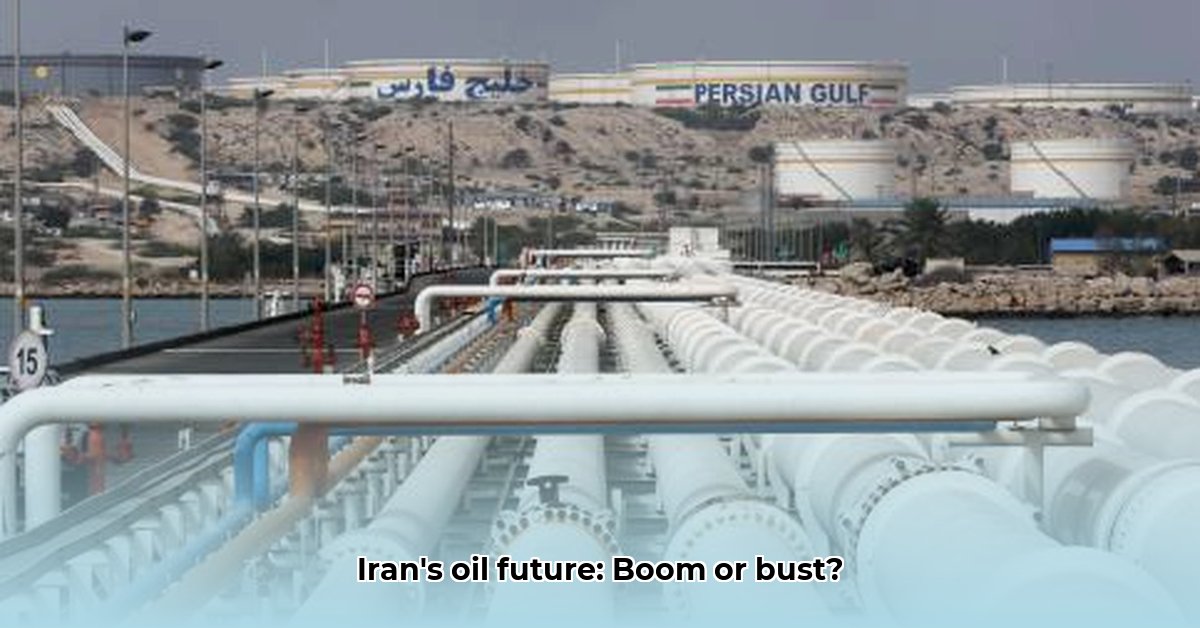
Iran's Oil Reserves: A Resource Assessment
Iran possesses substantial proven oil reserves, estimated to be around 10% of the global total, placing it among the world's leading oil-rich nations. These reserves are primarily located in the Zagros Mountains and the Persian Gulf's offshore basins. However, a significant portion of this oil is trapped within complex fractured carbonate reservoirs, presenting unique challenges for extraction. This geological complexity significantly impacts production rates and necessitates advanced recovery techniques. Can Iran overcome these challenges to fully exploit its vast oil wealth?
Production Challenges: A Multifaceted Problem
Iran's oil production faces a confluence of challenges, hindering its potential to reach its full output capacity. Firstly, many established fields are experiencing natural depletion, resulting in an annual decline of roughly 8% onshore and 10% offshore. This translates to a substantial daily production loss, potentially ranging from 400,000 to 700,000 barrels. Secondly, international sanctions have significantly constrained investment and technological collaboration with international oil companies (IOCs), limiting access to crucial expertise and advanced equipment. Thirdly, the nation's existing oil infrastructure is aging, further impairing production efficiency and overall output. How can Iran overcome these interconnected obstacles?
Declining Production: A Pressing Issue
The consistent decline in production at Iran's older oil fields is a significant concern. This natural decline, exacerbated by the lack of investment in maintenance and upgrades due to sanctions, necessitates innovative strategies to revitalise output. What technological solutions can be implemented to address this issue and sustain production levels?
Enhanced Oil Recovery (EOR): A Technological Solution
Enhanced Oil Recovery (EOR) techniques offer a potential pathway to boost production from mature fields. Methods such as gas injection (using CO₂, nitrogen, or hydrocarbon gases) show promise in improving extraction rates from complex carbonate reservoirs. This approach leverages Iran's abundant natural gas resources, offering economic and environmental advantages. CO₂ injection, in particular, has the added benefit of potential carbon sequestration, contributing to climate change mitigation efforts. However, widespread EOR implementation requires substantial investments in advanced technologies and expertise, areas currently hampered by sanctions.
Geopolitical Landscape: A Critical Influence
The influence of international sanctions on Iran's oil industry is undeniable. These sanctions severely limit foreign investment, access to cutting-edge technology, and collaboration with IOCs. This limitation prevents the implementation of modern EOR techniques and crucial infrastructure upgrades. A resolution of the geopolitical issues could radically transform the sector’s prospects. What is the potential effect of sanctions removal on Iran's oil output?
Future Outlook: Optimistic and Pessimistic Scenarios
The future of Iran's oil production hinges on several uncertain factors. Under an optimistic scenario, the lifting of sanctions could unlock significant foreign investment, enabling the widespread adoption of EOR technologies and the rejuvenation of aging infrastructure. New oil discoveries could further supplement production capacity. In contrast, a pessimistic scenario, characterized by continued sanctions, would likely see a continuation of declining production levels, resulting in a considerable underutilization of Iran’s vast oil reserves.
Collaborative Strategies for Success
Collaboration among diverse stakeholders is crucial for maximizing Iran's oil potential. A coordinated strategy involving the National Iranian Oil Company (NIOC), IOCs, the Iranian government, and research institutions is essential. This approach should focus on:
- NIOC: Conducting feasibility studies, pilot EOR projects, and securing funding for large-scale deployment.
- IOCs: Exploring technology transfer, joint ventures, and long-term partnerships, focusing on knowledge exchange and capacity building.
- Government: Creating supportive regulatory frameworks, providing incentives, and developing carbon capture and storage (CCS) infrastructure for CO₂ injection projects.
- Research Institutions: Focusing on optimizing EOR techniques tailored to Iranian reservoirs, integrating multiple EOR methods effectively.
Risk Mitigation: A Proactive Approach
Implementing EOR techniques presents associated risks. A robust mitigation plan addresses these uncertainties:
- EOR Technology Failure: Thorough testing, phased implementation, and continuous monitoring can minimise technical setbacks.
- Sanctions Regime: Exploring diplomatic solutions, securing strategic partnerships, and diversifying the economy are vital to lessen this impact.
- Geopolitical Instability: Careful planning, risk diversification strategies, and robust security measures are needed to ensure project continuity.
- Technological Advancements in Competitor Nations: Continuous R&D investment and strategic technology partnerships help maintain a competitive edge.
Conclusion: Navigating Uncertainty
Iran's oil sector stands at a critical juncture. The potential rewards of unlocking its vast resources are high. However, this achievement requires a concerted effort focusing on technological advancement, international cooperation, and a stable geopolitical environment. The balance between technological innovation and geopolitical realities will ultimately determine the future trajectory of Iran's oil industry and its global significance. The path ahead is fraught with challenges, but with a strategic approach, Iran could significantly revitalise its oil production and enhance its position in global energy markets.